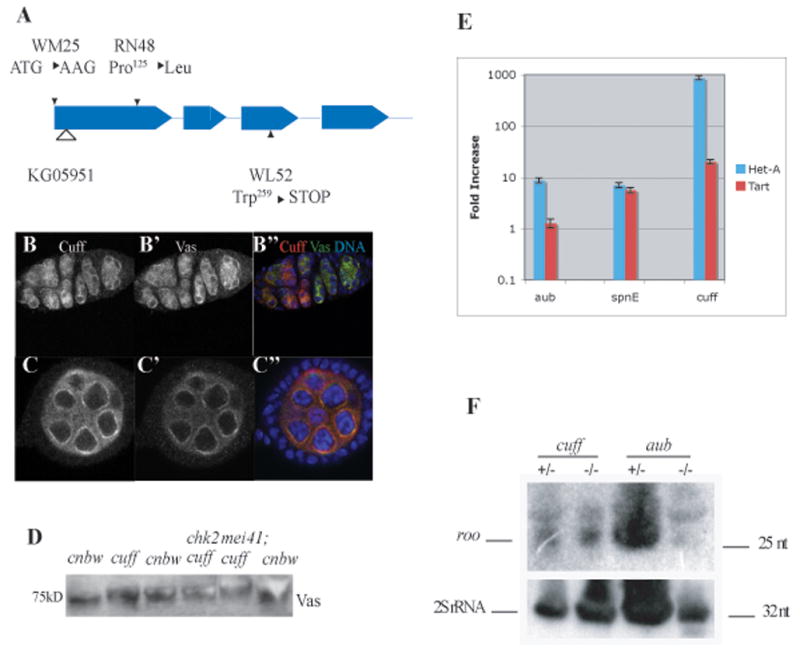Fig. 3. Characterization of cuff.

A. Sequencing of cuff mutants. cuffWM25, cuff RN48, and cuffWL52 were induced by EMS [6]. cuffKG05951 was derived by the BDGP Gene Disruption Project.
B–C. In order to analyze Cuff localization, we expressed HA-tagged Cuff protein under the control of nanos-Gal4 VP16. When expressed in this manner, Cuff shows a prominent peri-nuclear pattern, co-localizing with Vas protein in the germarium (B) and early stage egg chambers (C).
D. In cuff mutants, Vas protein electorophoretic migration is slower than in wild type. A very similar phenotype was observed in spnB mutants (Ghabrial and Schupbach, 1999). The Vas migration defect is suppressed by a chk2 mutation, but not by a mutation in the Drosophila ATR homolog mei41.
E. Mutations in cuff lead to a strong up-regulation of Het-A and Tart retrotransposable elements in the Drosophila germline. In cuff mutants, Het-A displays a 800-fold increase in transcript levels, while Tart is up-regulated approximately 20 fold. A deregulation of these elements can also be detected in the germline of spnE and aub mutants (see also [31]). In spnE ovaries both Het-A and Tart are up-regulated approximately 10 fold, while in aub only Het-A levels are significantly increased.
F. rasiRNAs production is not affected in cuff mutant ovaries. Similar levels of the roo rasiRNA can be detected in ovaries heterozygous (lane 1) and homozygous (lane 2) mutant for cuff. In contrast, roo rasiRNAs are expressed in ovaries heterozygous mutant for aub (lane 3), but are absent from the homozygous mutant.
